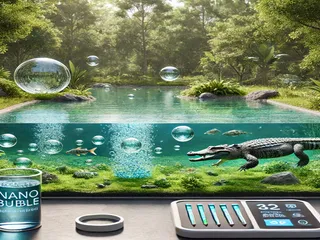Nanobubble technology has emerged as a revolutionary method in water treatment, offering an efficient solution for breaking down algae, bacteria, and organic waste. Nanobubbles are ultra-fine bubbles, less than 200 nanometers in diameter, that possess unique properties making them highly effective in purifying water. One of the primary advantages of nanobubbles is their ability to enhance oxygen levels in water bodies. These tiny bubbles can increase dissolved oxygen concentrations significantly, creating an environment where aerobic bacteria thrive. These beneficial bacteria play a crucial role in decomposing organic matter, thereby reducing sludge accumulation and improving overall water quality. Moreover, the elevated oxygen levels help in oxidizing harmful substances, rendering them less toxic. Algae blooms, often a result of nutrient pollution, pose significant challenges to aquatic ecosystems. Nanobubble technology addresses this by disrupting the growth of algae. The increased oxygenation and the physical interaction of nanobubbles with algal cells can cause cell wall rupture, leading to the collapse of algae populations. This process not only clears the water of unsightly blooms but also prevents the depletion of oxygen that typically follows algal die-offs, which can be detrimental to fish and other aquatic life. In addition to combating algae, nanobubbles exhibit bactericidal properties. The high oxidative potential associated with these bubbles can damage the cell membranes of pathogenic bacteria, leading to their inactivation. This makes nanobubble technology a potent tool in reducing waterborne diseases and improving the safety of water for both human consumption and ecological habitats. The application of nanobubble technology extends to the breakdown of various organic wastes. By promoting aerobic decomposition, nanobubbles accelerate the degradation of organic pollutants, including those from agricultural runoff and industrial effluents. This results in cleaner water bodies and reduces the environmental impact of such contaminants. Furthermore, nanobubble systems are energy-efficient and can be integrated into existing water treatment infrastructures with relative ease. Their ability to operate continuously without the need for chemical additives makes them a sustainable and cost-effective solution for water purification. In summary, nanobubble technology offers a multifaceted approach to water treatment by effectively breaking down algae, bacteria, and organic waste. Its implementation not only enhances water quality but also supports the health of aquatic ecosystems, making it a valuable asset in environmental management and conservation efforts.






















